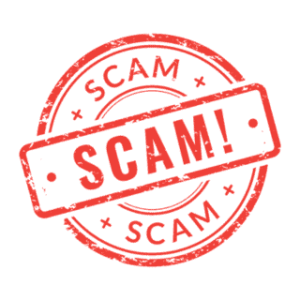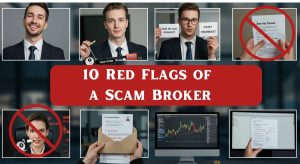In today’s fast-evolving forex market, the promise of high returns and quick profits attracts countless traders. However, this same allure can hide significant risks, especially if you choose a broker without proper regulatory oversight.
In 2025, ensuring that your forex broker is licensed by a reputable authority is more critical than ever.
This comprehensive guide explains what a broker’s license is, why it matters, and provides detailed, step-by-step instructions to verify a broker’s legitimacy.
Ensuring Secure Forex Trading: The Critical Importance of Broker License Verification
Verifying a forex broker’s license is an essential step to protect your investments and ensure a secure trading environment.
Brokers that hold valid licenses are subject to strict regulatory standards, which include regular audits, transparency requirements, and consumer protection measures.
In contrast, unlicensed or improperly licensed brokers may operate outside the law, leaving traders vulnerable to fraud and other unethical practices.
- Why It Matters:
Licensed brokers are required to meet rigorous standards set by regulatory bodies. These standards help ensure that client funds are managed properly and that the broker follows fair trading practices. In 2025, with increasing instances of scams, this verification process has never been more important. - The Growing Complexity of the Forex Market:
As technology advances, so do the methods employed by fraudulent brokers. New tactics like deepfake endorsements and sophisticated online scams make it imperative for traders to verify every aspect of a broker’s credentials. By doing so, you not only safeguard your investments but also contribute to a healthier and more transparent financial ecosystem.
Understanding Forex Broker Licensing
What Is a Forex Broker’s License?
A forex broker’s license is an official authorization granted by a recognized regulatory body that allows the broker to operate legally. It indicates that the broker has met specific requirements regarding capital adequacy, risk management, client fund segregation, and reporting standards.
Benefits of a Licensed Broker
- Regulatory Oversight: Licensed brokers are monitored by regulatory agencies, ensuring they adhere to industry standards and legal requirements.
- Investor Protection: In many jurisdictions, licensed brokers must follow strict guidelines designed to protect client funds, including compensation schemes in case of insolvency.
- Transparency and Accountability: Regular audits and public disclosures make it easier to hold brokers accountable for their actions.
- Reduced Risk of Fraud: A valid license is one of the best indicators that a broker operates ethically and transparently.
Global Regulatory Bodies
In 2025, several key regulatory agencies will oversee the forex market globally:
- United States:
- United Kingdom:
- Financial Conduct Authority (FCA)
Visit: FCA
- Financial Conduct Authority (FCA)
- Australia:
- Australian Securities and Investments Commission (ASIC)
Visit: ASIC
- Australian Securities and Investments Commission (ASIC)
- European Union:
- Cyprus Securities and Exchange Commission (CySEC)
Visit: CySEC
- Cyprus Securities and Exchange Commission (CySEC)
- Japan:
- Financial Services Agency (FSA)
Visit: FSA
- Financial Services Agency (FSA)
- Canada:
- Investment Industry Regulatory Organization of Canada (IIROC)
Visit: IIROC
- Investment Industry Regulatory Organization of Canada (IIROC)
- South Africa:
- Financial Sector Conduct Authority (FSCA)
Visit: FSCA
- Financial Sector Conduct Authority (FSCA)
Understanding these regulatory bodies and the jurisdictions they cover is fundamental to verifying a broker’s legitimacy.
Steps to Verify a Forex Broker’s License
1. Visit the Broker’s Official Website
- Locate Regulatory Information:
Look for a dedicated “About Us,” “Legal,” or “Regulatory Information” section on the broker’s website. Most reputable brokers display their license number, issuing authority, and relevant dates (issue and expiry) in this area. - Record Key Details:
Take note of the broker’s name, license number, contact details, and registered address. These details will be crucial for cross-verification.
2. Access the Regulatory Authority’s Website
- Use the Search Tool:
Navigate to the official website of the regulatory body mentioned by the broker. Most regulators provide an online verification tool or searchable register. - Enter Broker Details:
Input the broker’s license number or name into the regulator’s search function to retrieve the broker’s official record. Verify that the details (license number, dates, and registered address) match the information provided on the broker’s website.
3. Cross-Verify Broker Information
- Consistency Check:
Ensure that all details (broker name, license number, address, etc.) are consistent across the broker’s website and the regulator’s record. - Look for Disciplinary Actions:
Review any available records on regulatory enforcement actions, warnings, or sanctions related to the broker. This information can provide additional insights into the broker’s reliability.
Detailed Verification Process for Major Regulatory Bodies
United States: CFTC and NFA
- Step 1: Visit the NFA’s Background Affiliation Status Information Center (BASIC) at NFA BASIC.
- Step 2: Enter the broker’s NFA ID or name to verify registration and any disciplinary actions.
- Step 3: Cross-check the details with those provided on the broker’s website.
United Kingdom: FCA
- Step 1: Access the FCA’s Financial Services Register at FCA Register.
- Step 2: Search for the broker using the name or reference number.
- Step 3: Confirm that the broker is authorized and note any conditions or restrictions mentioned.
Australia: ASIC
- Step 1: Navigate to ASIC’s Professional Registers at ASIC Registers.
- Step 2: Input the broker’s name or license number to retrieve their record.
- Step 3: Verify that the license is valid and check for any historical issues or disciplinary actions.
European Union: CySEC
- Step 1: Visit CySEC’s Registered Entities page at CySEC Registered Entities.
- Step 2: Search for the broker by name or license number.
- Step 3: Confirm the broker’s registration details and any publicly disclosed limitations.
Japan: FSA
- Step 1: Go to the FSA’s Financial Institutions Search page at FSA Search.
- Step 2: Use the search function to find the broker and verify their registration status.
- Step 3: Compare the FSA record with the broker’s information for consistency.
Recognizing Red Flags
Absence of Licensing Information
- Warning:
If a broker’s website lacks clear licensing details or only provides vague statements about regulation, this is a significant red flag.
Mismatch in Information
- Warning:
Discrepancies between the details provided on the broker’s website and those found on the regulatory authority’s site can indicate potential fraud or misrepresentation.
Negative Reviews and Reports
- Warning:
Consistently negative feedback on platforms such as Forex Peace Army or Trustpilot, especially regarding issues like delayed withdrawals and poor customer service, should raise concerns about a broker’s legitimacy. - Action:
Avoid investing with brokers that have a history of unresolved complaints or regulatory sanctions.
Additional Verification Steps and Best Practices
Utilize Reputable Financial Resources
- Consult Guides:
Trusted sites like Investopedia offer in-depth guides on verifying broker licenses. - Check Independent Reviews:
Platforms such as Forex Peace Army and Trustpilot provide user reviews and detailed feedback on broker performance.
Engage with Financial Advisors
- Professional Insight:
If you’re uncertain about a broker’s credentials, seek advice from certified financial professionals or legal experts who specialize in financial regulation.
Stay Updated with Regulatory News
- Ongoing Monitoring:
Regulatory statuses can change over time. Regularly check for updates from regulatory bodies to ensure that your broker continues to meet required standards.
Protect Your Investments: Final Recap & Action Plan for Secure Forex Trading
Verifying a Forex broker’s license is not merely a formality, it is a critical safeguard that protects your hard-earned money and ensures that you engage in fair and transparent trading. By following the steps outlined in this guide and remaining vigilant, you can avoid falling prey to fraudulent schemes.
- Recap:
- Visit the broker’s website to gather regulatory details.
- Use official regulatory websites to cross-verify these details.
- Look out for red flags such as missing information, discrepancies, and negative reviews.
- Supplement your research with independent reviews and professional advice.
Sources:
- CFTC: https://www.cftc.gov/
- NFA: https://www.nfa.futures.org/
- FCA: https://www.fca.org.uk/
- ASIC: https://asic.gov.au/
- CySEC: https://www.cysec.gov.cy/
- FSA (Japan): https://www.fsa.go.jp/en/
- Investopedia Guide: https://www.investopedia.com/how-we-review-and-rate-forex-brokers-8699751
- Forex Peace Army: https://www.forexpeacearmy.com/
- Trustpilot: https://www.trustpilot.com/
By taking the time to verify a broker’s license, you enhance your protection against scams and contribute to a more secure forex trading community in 2025. Stay informed, do your research, and always invest wisely.
For a deep dive into spotting and avoiding scams, explore our comprehensive guide: How to Avoid Forex Broker Scams: The Ultimate Safety Guide (2025)



